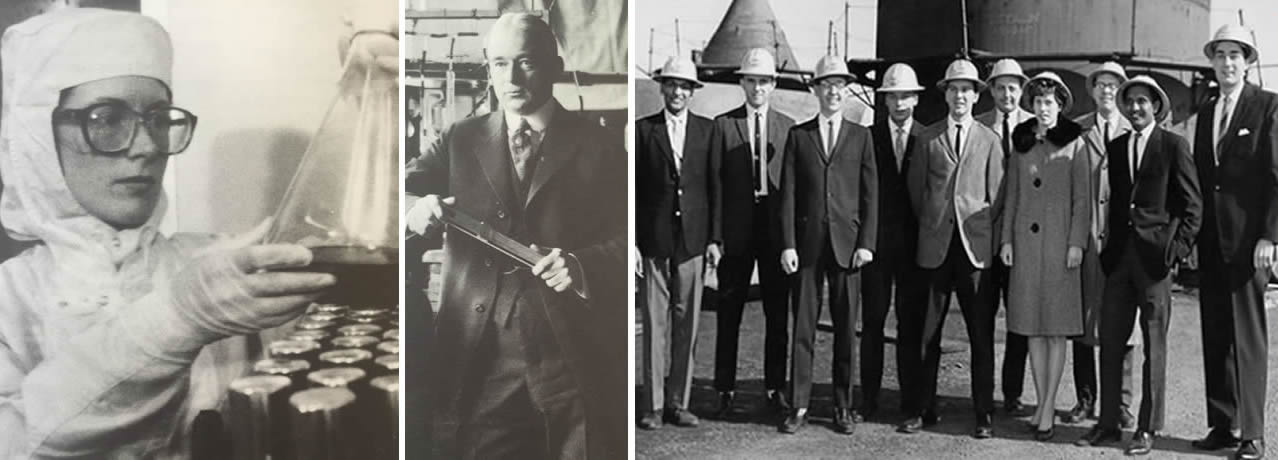ChemE Practice School celebrated its centennial event (September 29-October 2, 2016) Watch the centennial documentary, “Learn By Practice“, and more clips of incredible collection of stories on YouTube!
“The David H. Koch School of Chemical Engineering Practice is an anomaly at the Massachusetts Institute of Technology. In the 75 years since its founding, the School has changed in purpose and format almost not at all. Five “schools” – Architecture and Planning, Engineering, Humanities and Social Science, Management, and Science, giving the word a very different meaning in the Institute’s special vocabulary – have grown up around the Practice School. The result is that the Koch School is the oldest “school” at M.I.T. and the only one that has no dean and most of its faculty and students in residence off the campus.
“But in another sense, the School of Chemical Engineering Practice has been very much at home at M.I.T. throughout its 75 years. The School clearly fulfills the vision of the Institute’s founder in its emphasis on bringing scientific principles, and young people trained in them, to the making of useful goods. The School is widely regarded as the “flagship” educational program of a department that has itself been a flagship of M.I.T.’s leadership in professional education and research. Its alumni are nearly unanimous and remarkably outspoken in their enthusiasm for the effects of the School on their subsequent careers. They are uniquely supportive of the School and of M.I.T., and many among them are in fact responsible for the School’s survival. Among the School’s alumni are a remarkable number of the leaders of the nation’s chemical industries and of the faculty who have brought distinction to the Department at M.I.T.”
From The Flagship, the M.I.T. School of Chemical Engineering Practice 1916-1991, by John Mattill.
In 1915, Professor William Walker’s desire to develop industrial chemistry as a unique and necessary discipline, combined with alumnus Dr. Arthur D. Little’s vision for a practical component to university education in chemistry, resulted in the School of Chemical Engineering Practice. The concept was articulated in a report by the Visiting Committee to the Department of Chemistry and Chemical Engineering, vigorously promoted by MIT President Richard Maclaurin, and launched in 1916 with $300,000 in start-up funding donated by George Eastman of Eastman Kodak Company. Professor Walker was made Director of the School.
1917 Five stations are established in the northeast US, covering industrial operations in cement, dyes, abrasives, fuels, and paper.
1918 The first year was a resounding success and touted “an educational advance of the first order” by Professor Walker. However, the program was suspended due to the large numbers of its faculty and students who joined the war effort.
1920 Reopened the Boston (Revere Sugar Refinery, Merrimac Chemical Co. and Boston Rubber Shoe Co.) and Bangor Stations (Eastern Mfg. Co. and Penobscot Chemical Fibre Co.).
1921 Opened the Buffalo Station (Lackawanna Steel Co. and Larkin Co.).
1925 Enrollment soars immediately after World War I with the extraordinary development of chemical industry. Three stations in the northeast continue to thrive.
1943 World War II causes suspension of School.
1950-80 Increasing costs, combined with the increased technical capabilities resident in companies – and a new emphasis on “engineering science” in university curricula – lead many to question the continuing relevance of the Practice School.
1980-90 Determined alumni undertake fundraising campaign to save the Practice School. A major gift from David H. Koch places the Practice School on a firm foundation. The School is renamed in his honor.
1990s The Practice School expands to international stations. A diversified suite of host companies participate. Telecommunications and transportation allow projects to be conducted at sites remote from the stations.


